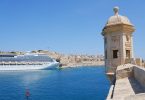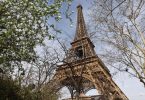it is a city rich in history, art, and places of cultural interest, and it is also a well-known seaside resort and a summer destination loved by Venetians and beyond. The small town is crossed by various canals connected by bridges, and this conformation makes it very similar to Venice but unlike the Serenissima (Venice), it is accessible also by cars and public transport.
Ponte Vigo, the historic symbol of the city of Chioggia, represents the balcony of the city and is the most artistic of the 8 bridges that straddle the Canal Vena, the equivalent of the Rialto Bridge in Venice.
The history of Ponte Vigo is quite ancient. It appears to have existed between the end of the 14th and the beginning of the 15th century. Originally its structure was made of wood and was subsequently built in masonry in 1684-85 by the mayor at the time, Morosini, as commemorated by a plaque above the north arch.
Thanks to a lantern positioned on the bridge in 1796 by Mayor Angelo Memmo, it was also a point of reference for sailors who could thus identify the entrance to the port more easily, especially on dark or stormy days.
A Bit of History of Chioggia
The origin of Chioggia is linked to classical mythology, to the legend of Aeneas, the mythical Trojan hero who escaped during the Trojan War and landed on the Italian peninsula. Here Aeneas and his companions Antenor and Aquilio founded Clodia, which later became the current Chioggia. In 2000 BC, the Pelasgian seafaring people settled and took possession of the cities of the upper Adriatic including Clodia.
Chioggia is located a few kilometers from the Venice Lagoon. A dynamic city, which mixes architectural elegance with maritime veracity, Chioggia is one of the most beautiful and interesting historic centers in the Veneto, but not everyone knows its splendid historic center, the beaches of the lagoon, and its cultural beauties.
Chioggia is less known and less inflated than Venice, allowing us to better appreciate the local culture. In Chioggia, tourism is moderate as in any other art city in the Veneto other than Venice where the flows of holidaymakers are often uncontrolled and exaggerated putting the conservation of the heritage at risk. This allows visitors to experience magical moments and an extraordinary holiday.
Chioggia is the city of bridges, of waters (that of the lagoon and that of the mouths of the Brenta and the Adige), and of films. In fact, many of the films set in Venice were filmed here. Ultimately, Chioggia and Venice are very similar, but Chioggia is decidedly less expensive.
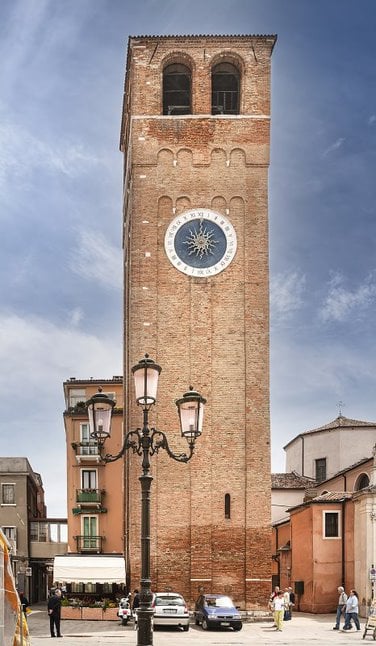
Among the monuments of great historical interest, is the Tower of Sant’Andrea, a bell tower of approximately 30 meters, which, when it was built (10th-11th century), had defensive and control functions over the port of Chioggia. Since 1389, it has housed one of the oldest tower clocks in the world and it still works perfectly today, whose paternity can be attributed to the Dondi dall’Orologio family. The Clock Museum is located here, set up along the 7 floors of the bell tower.
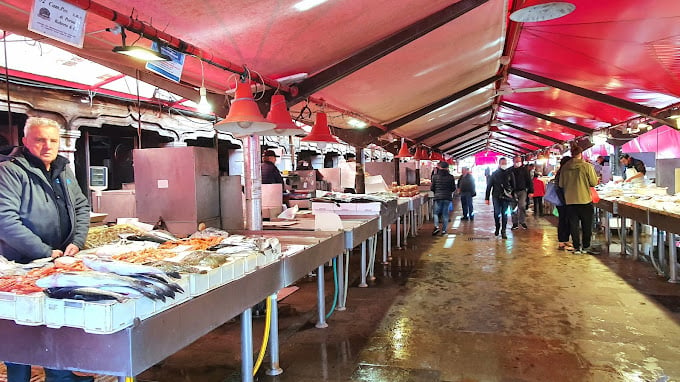
Worthy of mention is the famous Pescheria (fish market). Here, daily fresh fish caught at night by local fishermen arrive – a centuries-old tradition that is repeated every day. From here, enter the sector of simple but delicious gastronomy based on fresh daily fish caught.
The Mystery Man Exhibition
The highlight of the entire exhibition is the 3-dimensional and hyper-realistic sculpture totally faithful to the image of the Holy Shroud man, “The Mystery Man.”
The international exhibition officially opened its doors to the public inside the suggestive 14th-century church of San Domenico in Chioggia. Here, it is possible to experience an immersive and unique journey through art and history that culminates in the spectacular sculpture depicting the man of the Holy Shroud.
The Mystery Man – which met great success last year in Spain – traveled thousands of kilometers to be welcomed for the first time in Italy, in the city of Chioggia, Venice. The exhibition proposes a real itinerary in 6 rooms in which the technology of Arti Splendor plays a fundamental role in living the most immersive experience possible.
The first room is completely dedicated to Jesus of Nazareth, in which there are various texts on the history of the character and his face. His death sentence is retraced through the reproduction of various objects: the coins of Judas, a crown of thorns, the cross, and finally the tomb, inside which appears a hologram of the burial. It follows the Shroud, its discovery, and its arrival in Turin. This makes it possible to physically immerse in the history of the image of Christ over the centuries, from the first representations up to our days.
The fulcrum of the video mapping room is a reproduction of the Shroud onto which the history of the sheet is projected, as well as the analyses and forensic studies that have taken place over the years.
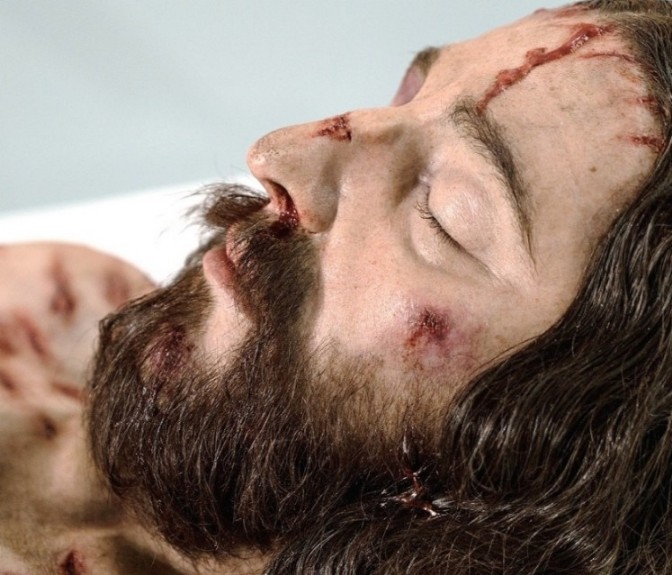
The body is the culmination of historical, scientific, and artistic research that lasted more than 10 years and was edited by Álvaro Blanco.
The sculpture – made of latex and silicone with natural hair – represents a totally naked man lying about 1.78 meters in height and weighing 75 kg.
The work does not present any artistic presumption, letting only the naturalness and realism with which it was conceived and created speak for themselves. On his body, there are numerous wounds attributable to torture and crucifixion – the signs of passion.
Experiencing The Mystery Man exhibition is an all-encompassing experience, an immersion in history and mystery. The Shroud is a relic steeped in science, mystery, and faith, to which hundreds of people over the centuries have tried to give an answer.
Moya, CEO of Arti Splendore, said: “The exhibition is truly special: this hyper-realistic body has never been realized; it is the first time that the face of the one who left his mark on the sheet can be seen.”
The exhibition ends on January 7, 2024.









